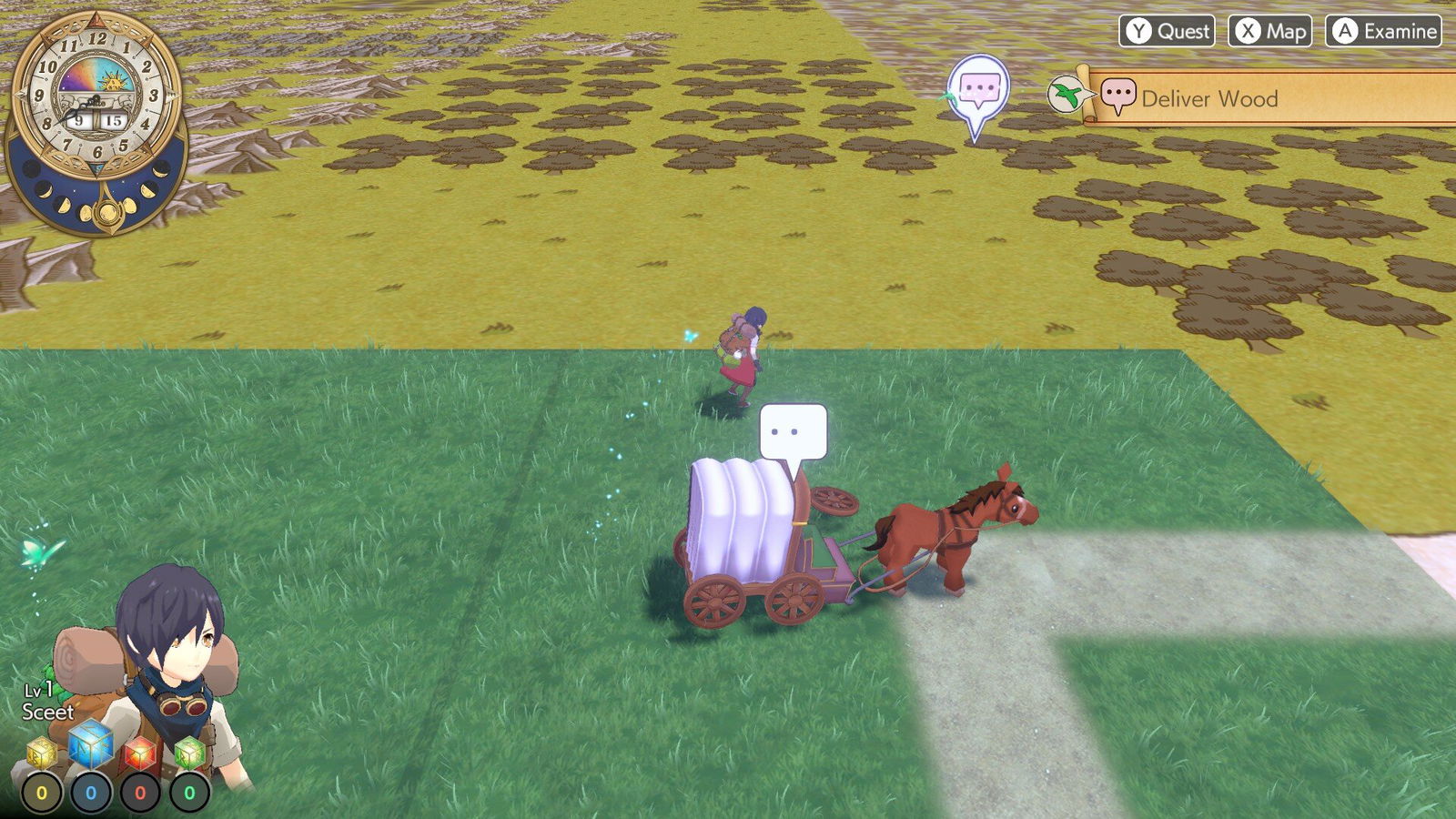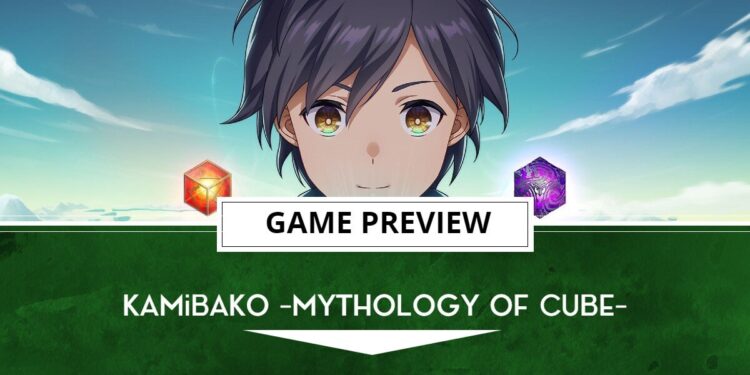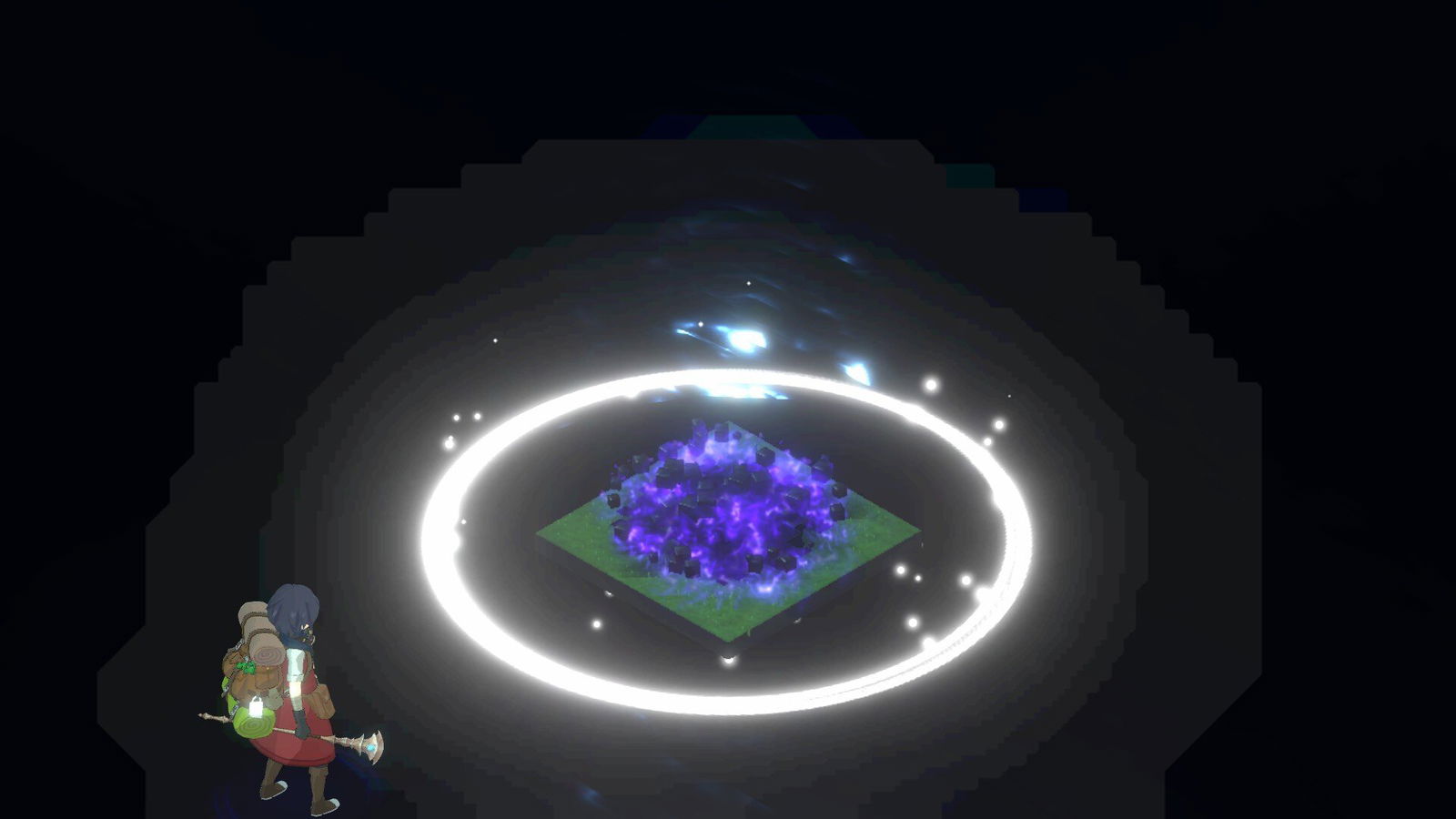I heard about KAMiBAKO -Mythology of Cube- and instantly was interested in it. A game that worked on various levels of being a JRPG, adding town building, resource harvesting, and interesting battle and party mechanics all seem to be a good checklist of mechanics. The question is can it keep track of all those mechanics to make them interesting?
Game Name: KAMiBAKO -Mythology of Cube-
Platform(s): PC(Previewed),PS4,PS5
Publisher(s): Gravity Game Arise Co. LTD
Developer(s): Gravity Game Arise Co. LTD
Release Date: Coming Soon
Price: N/A
KAMiBAKO -Mythology of Cube- starts with a Goddess explaining your role as a Restorer. A lot of dark fragmentation is taking hold of this world as the influence of the Devil in the Abyss is continuously taking hold over the land. This results in monsters and something called the Great Division. As the Restorer your goal is to connect the continents and cities once again. This will require you to restore the mana from the fragmentation surrounding the land you can find back into the world.
The Good
I was pleasantly surprised that there was so much meat to this demo and how much of the mechanics it introduces you to in the game. You start off going to one of the close by cities accompanied by a fairy. You get to talk to the NPCs around the city and hear what they feel about their home and the surrounding areas. You can also get side quests from taverns. These generally are just normal cookie-cutter quests of defeating several enemies or getting certain items from the overworld. The first mechanic you get to experience is going to fragmentation and restoring the mana to the land. This is mainly a puzzle that requires you to combine elements in the form of cubes so that you can remove those cubes from the land. Your goal is to remove colored cubes to get the bars on the left side to the max. Each time you remove cubes from the board, more cubes return in their place.
Once the fragmentation is removed, the tile of the map you are on is restored and the path can now be traveled. You also get some mana in the form of cubes in your inventory. You go pick up two party members Arc and Minas to introduce you to the battle system in the game. You don’t get direct control of your party members but you can give them mana to unleash their special attacks. The color of the mana you give them determines who gets to unleash their special and what it does. If you change the unit’s weapon or gear around it also changes what mana is required to perform a special attack.
You also get a taste of the town-building element in the demo of KAMiBAKO -Mythology of Cube-. It starts with grabbing wood and other materials from the fairy who travels with you. You get to make a forge and a lumberjack building. This will help you get extra resources but you can also use them to make other buildings like inns, and bridges. It also lets you create houses and get more citizens for the areas you help build on and renovate.
My favorite part of the demo though is the map layout. As you walk on the overworld, it looks like a map. As you get close to an area, it opens up and the game graphics take over and you can still see the parts you haven’t discovered in the map layout, but it’s so cool to see it slowly go from being a map to a larger area in the game. I think it is a unique approach and it is going to remain in my head as I remember about my time spent in the demo.

The Bad
KAMiBAKO -Mythology of Cube- has a lot of mechanics and gameplay elements going for it. That is also a bit of a problem in this demo. There are a ton of things you will want to test or experiment with, but due to the limitations of the first area, you just don’t get to experiment nearly as much as you want to. This is very prevalent with the town building aspect. You only get to test it on one tile in the demo and then the very next tile is when the demo ends.
The map of the overworld is categorized into tiles. These tiles seem the same with grass and trees. They don’t seem very unique except when roads are involved and they lead up to towns or other areas of the world. Even though seeing the overworld switch from map to in-game textures, it hardly is a surprise when all the tiles look the same. It may just be due to it being the beginning area but there are no streams, lakes, or anything that seems to differentiate the tile locations. Granted I could imagine as you see the larger map it may look more unique than it is just with the first area of the game.
The Verdict
Honestly, I was very surprised with how good the balance of KAMiBAKO -Mythology of Cube- was with how many elements it has. If you think you are interested in one or two of these types of gameplay, whether it is town building, cube puzzles, or just turn-based combat, then it is worth giving the demo a try. You can find the demo on their Steam page. There is no release date but it does say it is coming soon. KAMiBAKO -Mythology of Cube- will be released on PS4, PS5, and PC.




